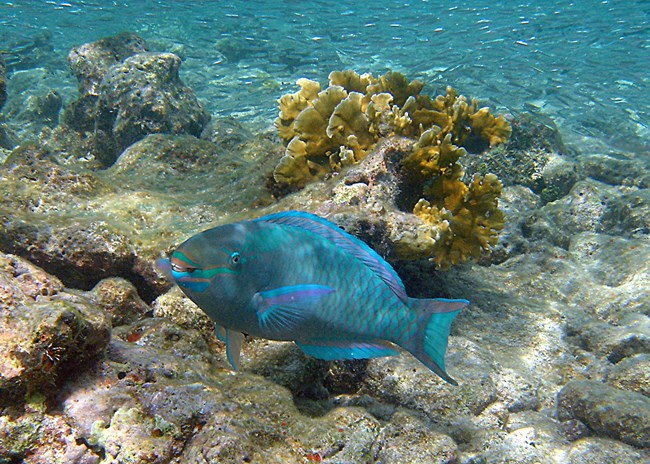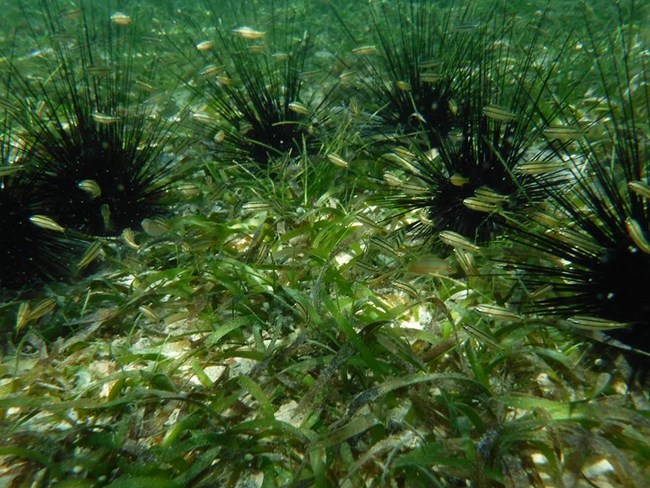
Caroline Rogers The most visited underwater habitat in the park is the coral reef. Approximately 40 species of corals grow in the warm (75-85 F), clear water, where they form fringing and patch reefs. Corals are a very special group of animals that live in a colony. Corals have a soft inside structure called a polyp, which form a rigid external skeleton. As the polyps grow together in their tight colony, they take on different shapes and sizes that become the coral reef. There are branching corals, plate-like corals, dome-shaped corals and soft fan or whip-like corals. Some common corals in the park are: elkhorn coral (Acropora palmate), staghorn coral (Acropora cervicornis), brain coral (Diploria strigose) and star coral (Montastraea annularis). Living on the coral reef are some 400 species of reef fish. Dominant families include damsels (Polacentridea), wrasses (Labridae), snappers (Lunidae), surgeonfishes (Acanthuridae), grunts (Pomadasyidae) and parrotfishes (Scaridae). Occasionally you may also see barracudas, eels, sting rays and sharks. 
2017 YCC crew Three species of sea turtles may be seen in the Virgin Islands. They are the hawksbill (Eretmochels imbricate), green (Chelonia mydras) and leatherback (Demochelys coricea). The most common turtle found in the water is the green sea turtle. The hawksbill turtle regularly nests on St. John. The leatherback, which is the largest sea turtle in the world, migrates to the Virgin Islands to nest in April and May. Although uncommon, whales and dolphins may be seen swimming through park waters in the winter months. Both bottlenose (Tursiops truncatus) and Atlantic spotted dolphins (Stenella frontalis) have been known to swim close to shore, while migrating humpback whales (Megaptera novaeangliae), sometimes with calves, usually stay further out. Other ocean habitats include seagrass beds and algal plains. Three different types of seagrasses grow in the Virgin Islands. They are turtle grass, manatee grass and shoal grass. These grasses stabilize the bottom by holding sand in place with an extensive root system. They also provide food and shelter for fish, conch, sea turtles and sea horses. Numerous stressors are affecting our coral reefs and other ocean habitats. Coral are suffering from many diseases including: bleaching, white plaque, black band, white band and white pox. Corals and the other ocean habitats are also negatively affected by overfishing, hurricanes, sediment and anchor damage. Because of their dramatic decline, corals have been listed as endangered species. As of March 2010, the park has had to deal with the threat of the invasive Indo-Pacific lionfish. The fish can wreak havoc on the local fisheries in the park. It is avoided by Atlantic predators and has a voracious appetite for our native fishes. |
Last updated: September 3, 2017
